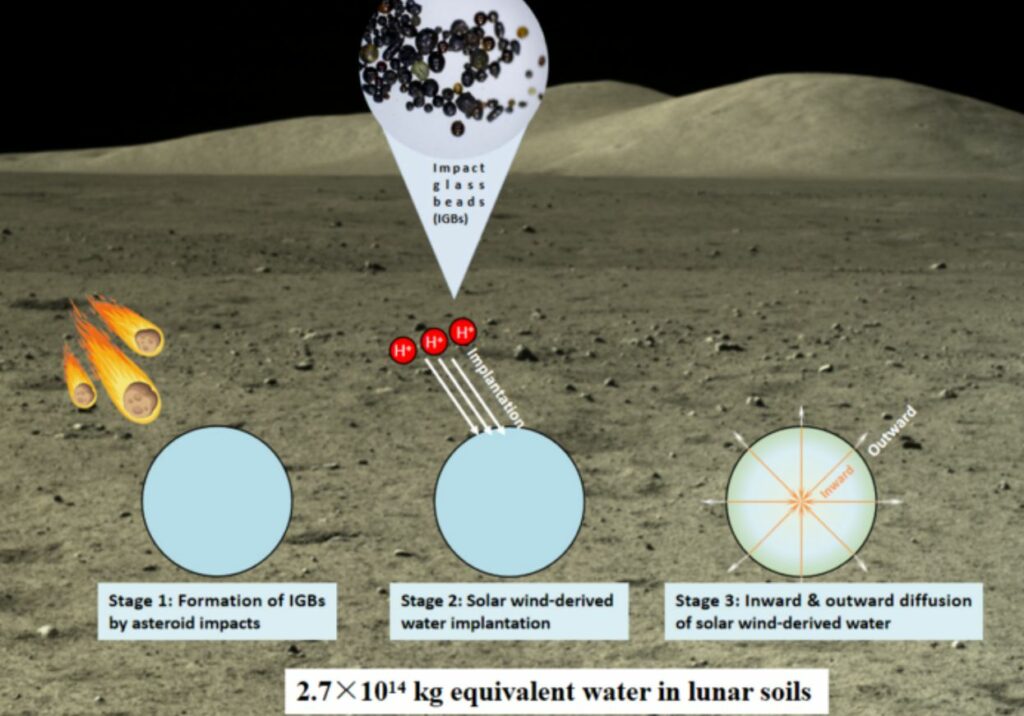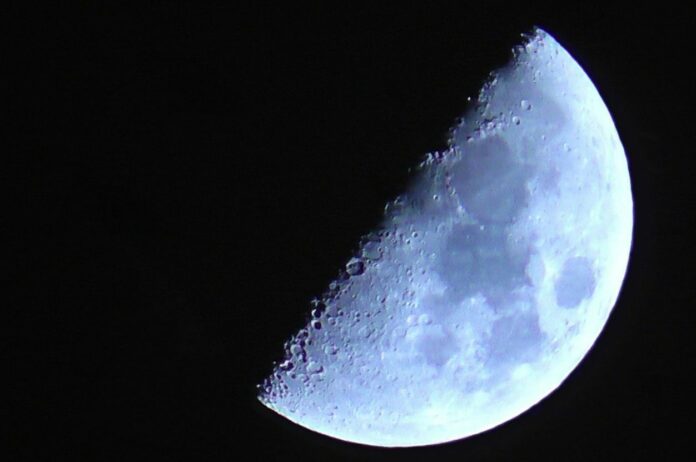Lunar Soils Reveal Surprising New Water Reservoir on the Moon Hidden in Impact Glass Beads
A team of researchers led by Prof. HU Sen from the Institute of Geology and Geophysics (IGG) at the Chinese Academy of Sciences (CAS) has made a significant discovery related to the presence of water on the Moon.
This discovery is of particular interest because it could potentially be used as a resource for future lunar missions, as well as for other space exploration endeavors.
It has been discovered that there is water present in impact glass beads found in the lunar soils of Chang’e-5 (CE5).
According to their detailed analysis, these glass beads could be a previously unknown water reservoir on the Moon. The beads seem to be recording the movement of solar wind-derived water, which flows in and out dynamically and may act as a buffer for the lunar surface water cycle.
Today, Nature Geoscience published the findings of the research, which reveal that although the presence of structural water or water ice on the Moon has been confirmed by many lunar missions, the amount of water on the Moon is considerably less than that on Earth.
It has been observed that surface water on the Moon experiences diurnal cycles and loss to space, indicating that there must be a layer or reservoir of hydration at a certain depth in lunar soils to sustain the retention, release, and replenishment of water on the Moon’s surface.

Despite previous studies on the water inventory of fine mineral grains in lunar soils, impact-produced agglutinates, volcanic rocks, and pyroclastic glass beads, none have been able to explain the retention, release, and replenishment of water on the surface of the Moon, i.e., the lunar surface water cycle. As a result, it can be concluded that there is an unidentified water reservoir in lunar soils that has the ability to buffer the lunar surface water cycle.
Guided by Prof. HU Sen, doctoral student HE Huicun proposed that impact glass beads, which are a common component of lunar soils with an amorphous nature, could be a potential subject for investigating the unidentified hydrated layer or reservoir in lunar soils.
In order to identify and characterize the missing water reservoir on the Moon’s surface, HE Huicun conducted a systematic study of the petrography, major element composition, water abundance, and hydrogen isotope composition of the impact glass beads that were brought back by the CE5 mission.
The CE5 impact glass beads have uniform chemical compositions and smooth exposed surfaces. They have been found to contain water with an abundance of up to approximately 2,000 μg.g-1, with highly depleted deuterium characteristics. The negative correlation between water abundance and hydrogen isotope composition indicates that the water present in the CE5 impact glass beads is derived from solar winds.
The research team also conducted an analysis of water abundance across six transects in five different glass beads. This helped to reveal the hydration profiles of water that were derived from solar winds. It was observed that certain glass beads had been affected by a subsequent degassing event.
These impact glass beads served as a sponge for regulating the lunar surface water cycle. The researchers have approximated that the amount of water provided by impact glass beads to lunar soils ranges from 3.0 × 1011 kg to 2.7 × 1014 kg.
“These findings indicate that the impact glasses on the surface of the Moon and other airless bodies in the solar system are capable of storing solar wind-derived water and releasing it into space,” adds Prof HU.
Several universities and institutions collaborated on this study, including Nanjing University, The Open University, The Natural History Museum, The University of Manchester, and the University of Science and Technology of China.
Source: 10.1038/s41561-023-01159-6
